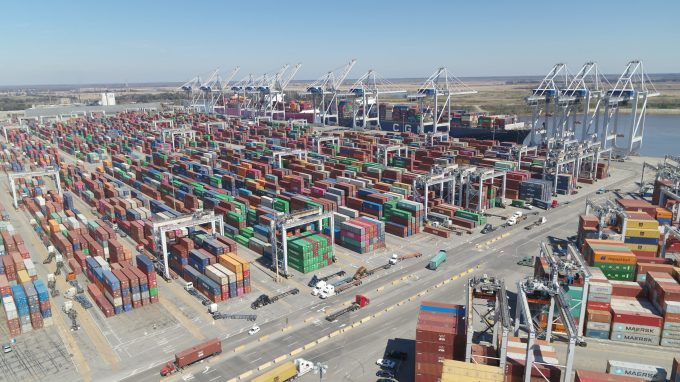Container spot rates have peaked as all major trades see prices fall
There was more evidence in this week’s container port freight markets that peak prices on ...
TFII: SOLID AS USUALMAERSK: WEAKENINGF: FALLING OFF A CLIFFAAPL: 'BOTTLENECK IN MAINLAND CHINA'AAPL: CHINA TRENDSDHL: GROWTH CAPEXR: ANOTHER SOLID DELIVERYMFT: HERE COMES THE FALLDSV: LOOK AT SCHENKER PERFORMANCEUPS: A WAVE OF DOWNGRADES DSV: BARGAIN BINKNX: EARNINGS OUTODFL: RISING AND FALLING AND THEN RISING
TFII: SOLID AS USUALMAERSK: WEAKENINGF: FALLING OFF A CLIFFAAPL: 'BOTTLENECK IN MAINLAND CHINA'AAPL: CHINA TRENDSDHL: GROWTH CAPEXR: ANOTHER SOLID DELIVERYMFT: HERE COMES THE FALLDSV: LOOK AT SCHENKER PERFORMANCEUPS: A WAVE OF DOWNGRADES DSV: BARGAIN BINKNX: EARNINGS OUTODFL: RISING AND FALLING AND THEN RISING

Persistent and mounting congestion at US west coast ports has caused some shippers to seek the sanctuary of the east coast to speed cargo through the supply chain – but this avenue is also becoming increasingly problematic.
As congestion at Pacific gateways worsened, the shift to east coast ports gathered momentum, but now these are struggling with increasing congestion – halfway through last week there were 24 ships waiting for berths at the port of Savannah, and Maersk Line called the situation at Georgia “increasingly challenging”.
The number of vessels at anchorage in San Pedro Bay waiting for berths at Los Angeles and Long Beach climbed to around 70 last week, signalling ever-lengthening wait times.
But at the same time, seven ships were riding at anchor at the port of New York & New Jersey, according to the port authority. (Another source counted nine ships waiting.) And through August and most of September there were four or five ships waiting on any given day, up from one or two in the previous months.
In Savannah, container dwell times averaged 9.2 days last week, way above the port’s average of 4-5 days. In New York, container dwell time has doubled to 6-7 days.
Growth at these gateways has been massive. In the fiscal year that ended in June, Savannah saw a 20% surge in container volumes and at the NY/NJ port complex import volumes are at levels not expected until 2025.
Much of the problem stems from issues beyond all the ports, namely a congested rail network and shortage of trucks to move boxes off the docks. According to one report, in Los Angeles there are 16 containers waiting for every available truck.
While the situation in southern California has got all the attention, congestion problems are pretty much universal at this point, said Craig Grossgart, senior VP global ocean at Seko Logistics.
“Everyone is so focused on Los Angeles/Long Beach that the other ports are getting passes,” he said. “Savannah is a mess, New York/New Jersey ports are a mess and I think every port is probably struggling with congestion, but with the new benchmarks at LA/LB, NY/NJ and Savannah, they don’t seem so bad in comparison. So now, ‘our dwell times are just five days’ has become a rallying cry of sorts.”
And he sees little benefit in diverting traffic to other entry points. He explained: “There is a first-mover advantage, but then the lemmings follow and you have the same problem you had in Los Angeles/Long Beach.”
Given the large share of US imports that flow through the top gateway complex in southern California (about 40%), a minor shift from there would overwhelm the other ports, he added.
Georgia Ports Authority is accelerating the creation of additional container storage capacity in Savannah. On 28 September, it approved over $34m to develop two parcels of land adjacent to existing facilities or expansion projects. These will add 22.2 and 18 acres into the equation, boosting the expansion drive to a combined total of 230 acres. They will be opened in phases, with full implementation due in 2023.
For the current peak season, importers will have to make do with the existing capacity – unless they shift traffic to air cargo. With the clock ticking for waterborne imports to reach the US in time for the peak shopping window, and ocean carrier schedule reliability hitting an all-time low in August, according to Sea-Intelligence, airfreight – or a combination of it with other modes – will be a more viable solution soon than routing cargo through alternative ports.
Comment on this article